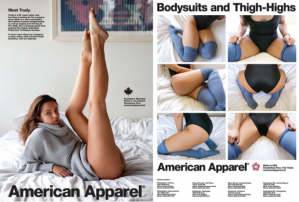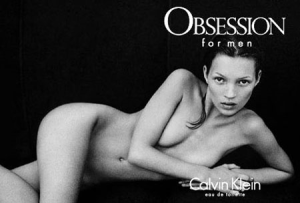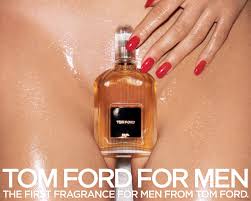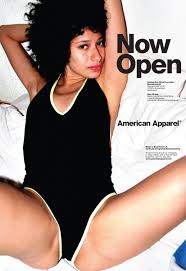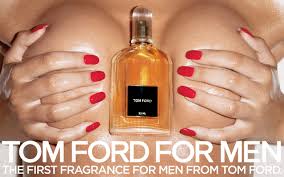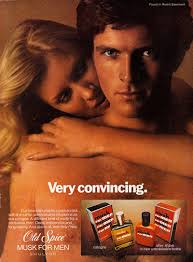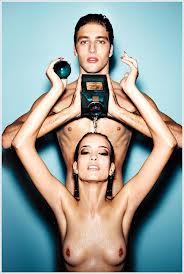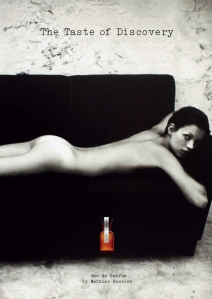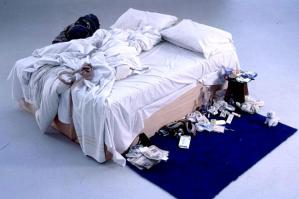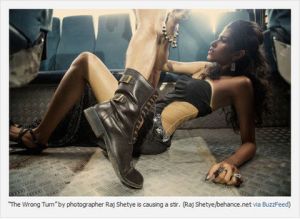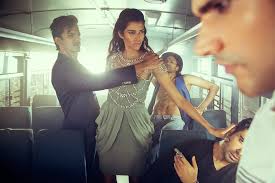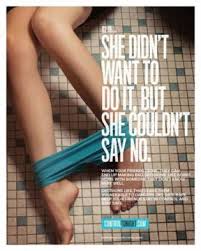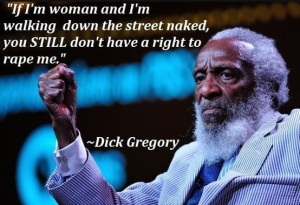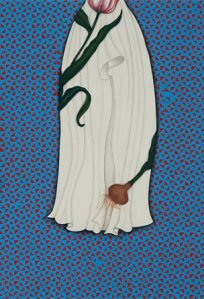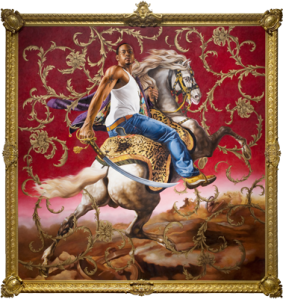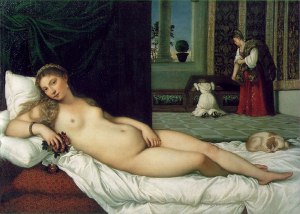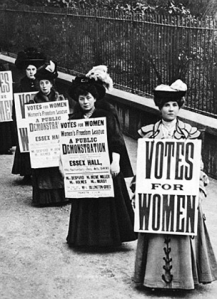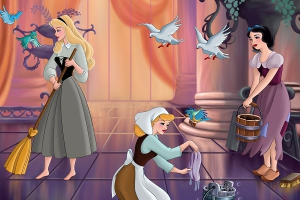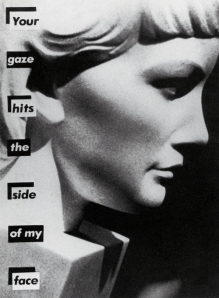#1 Submit and share a 500 word personal response (including references to researched artists) to one of the themes taught in class and prepare for a conversation about it in class. (20% of grade)
By Andrea D’souza
The topic that I chose to write about is the female body, in particular how women’s bodies are being used in advertisements as a sexual object. Even exploited to some extent in order to sell their products and put forward their message. Advertisements are a form of communication and the advertising companies have found a great way to persuade their audience to purchase their products with the use of female body in the form of pleasing images and narratives leaving an impact on them. Advertisements such as beauty products (Fair & Lovely, Sunsilk), dieting products that show unrealistic expectation of women’s body which I believe leave a negative impact on some of its viewers. Ordinary women being under the pressure of having a perfect body and the need of adjustments. I don’t think its wrong for women to play a part in such advertisements as long their identities are not lost, for instance most of the images I came across were emphasizing mostly on their legs, breast, stomach cropping out their faces treating them as objects, I mean where is ones personal identity here?. While doing my research what I came across is massive use of female body in advertisements to sell perfumes for men. Earlier more emphasis were given on slogans that were used in these ads but now more emphasis is given on the image used in these ads which are mostly women being objectified with the sexual images of their bodies, what we have left then is just their images with name of the brand. Examples of such perfume brands are (Tom Ford for Men, Calvin Klein, Gucci Guilty Black).Women have and are still being used as objects in beer advertisements, posing naked with beer bottles in a way to attract men to purchase specific brand of beers. The worst that I came across were advertisements by American Apparel.[1] Having a number of controversies related to it. Just this year, the Advertising Standards Authority in Britain banned two of the company’s ads for being “overtly sexual.” And also for sexualizing models under the age of 16.
Ads are being created by Peta (People for the Ethical treatment of animals) using especially female body as equal to animal bodies. Leaving it on individuals as to how they really treat animals as an object or something living. What I personally think that they could seriously come up with something other than portraying women. Also we always see women pose in certain ways I wonder why men don’t. I came across a shirt advertisement in one image this guy wears the shirt with all his buttons closed till his neck and stands decently where as in the other image the women wears the same shirt and poses in a sexy manner. It’s mostly seen that women are objectified more as compared to men; hopefully things shall change some day!
[1] Adams, R. (2013, May 16). American Apparel Swedish Controversy Calls Out Brand For ‘Degrading’ Women (PHOTOS). Retrieved September 8, 2014.
_________________________________________________________________________________________________
TThe history of sexuality by Michael Foucault
By Bisma Raffat
The repression of sexuality as a discourse has been subject to restrictions and limitations over the course of history. However many Writers, scholars, and intellectuals have taken up this subject of study in an attempt to decipher the undertones behind sexuality, and its position in society. In this pursuit Michael Foucault in his book “the history of sexuality “attempts to address and offer discourse over the institution of sexuality its origins, its evolving nature and, the movements of its liberation.
In his writing Foucault puts forward the concept of “repression hypothesis” whereby he states that society and its design is such that sexual repression has become the norm. This was systematically induced into mainstream culture, in converse to it being naturally occurring phenomena. He speaks of the frankness of sexual advances and openness of society towards sex during the 17th century for sake of comparison and to establish that the further repression of sexuality was a phenomenon of the Victorian era.
Foucault speaks of the discursive element of sexuality primarily; his hypothesis was supported by Freud’s psychoanalytic approach to issues of insanity and sexuality.
Foucault’s purpose in attempting to express sexuality in an openly discursive aspect is to question not only the systematic repression of sexuality but also to identify the repercussions or rather the reasons for this suppression and its role in power dynamics. Foucault believes that it is through suppression of sex, that power was maintained. This suppression played a significant role in determining the social norms of today. By means of faith, inner and external sense of morality, and law the Victorian society became the epitome of sexual repression.
In my opinion, the secretiveness nature of sex since the Victorian era was a tool to control and dominate society and its norms. Since, knowledge or rather controlling the source of knowledge ensures power this was a means of influencing culture and language. Foucault’s examination includes the impact of sexual repressiveness on language.
The institution of marriage has claimed discourse on sexuality as its exclusive right. I believe that it is this aspect of the social system that determines where power lies in modern day society. Foucault believed that with knowledge come power and a certain kind of power that lies within the secretiveness of sexuality was the means of moral and social governing of people.
In this art work the artist (Tracy Emin ) explores the nature of modern day life, issues surrounding sexuality, gender stereotypes and society’s attitude towards it.
This work is autobiographic; she has displayed a very personal space. The preconceived notions of power, sexuality and gender are being examined. This is not just a self reflection but also a mirror to society about its morality, gender bias, discrimination and dominance. Her visual language comprises of objects from everyday life carefully selected to provide an insight to the social values and their irony. Liberation yet masked behind illusions of self empowerment and equality , Power dynamics, struggles and women’s’ plight in a contemporary world. She explores the nature of the artwork, its intangibility compared to the intangibility of society and its norms. This is a critique of the repression of sexuality and the questions that it raises for intellectuals and the common man alike.
Micheal Focault ‘s “history of sexuality”
Between Marx and Nietzsche: The Limits of (Sexual)
Liberation in Foucault’s History of Sexuality, Volume 1
http://www.facstaff.bucknell.edu/jms089/Z-Unpublished%20Work/Shields-Between.pdf
http://www.sparknotes.com/philosophy/histofsex/section1.rhtml
________________________________________________________________________________________________
Why have there been no Great Women Artists?
by Dania Shah Khan
A feminist debate in the Art World is the non-existence of ‘Great’ Female Artists. Linda Nochlin boldly addresses this in her essay “Why have there been no Great Women Artists?”
Linda Nochlin investigates the institutional environments that discouraged and altogether prevented females from pursuing art careers of the same caliber as their male counterparts. One of the critical reasons, she asserts, is the complete lack of Male or Female Nudes for female artists as late as the 1850s.
This huge disparity between Male and Female Artists in an art institution clearly illustrates the one of many preferences towards the blossoming of the Male artist in his drawing skills of anatomy, a major component in art. And thus, completely disallowing the artistic development of the Female Artist in order to preserve her modesty and decency. Ironically, Female Nudes, when available, were no issue in terms of the decency and modesty for Male Artists who could freely draw them without any restraints.
The arts is fortunate to those born ‘white, preferably middle class, and, above all, male.”[2] Nochlin further suggests. Although there might have been female artists worth appreciating for their talents, it was not deemed important enough. Instead society bred chauvinism and sexism, saluting male artists and booing female artists, shunning them or completely disregarding their talents.
Artemisia Gentileschi is one of the many who has been subjected to a chauvinistic society’s cruel treatment when it comes to women. Shunned and imprisoned due to accusations of promiscuous behavior with her Tutor who repeatedly raped her, she tried to testify against him, but was instead subjected to torture.[3] Despite the many inflictions she went through, her paintings are powerful and artistically superior to many in the depictions of women and men. She emerges as one of the Great Female Artists if not officially termed in her times, but of today, when women are recognized and acclaimed for their endeavors in art.
Another successful painter is, Rosa Bonheur especially in the field of animal painting which was in demand rather than Traditional History painting. She was known as a Tom boyish, trouser sporting and free spirited woman. She learnt from her artist father Raimond Bonheur who was an active member of the Saint – Simonian Community, which she later joined. This community though rather eccentric in its views, was influential to her, because of its recognition of the equality of women. She was subjected to criticism for hair cropping and trouser sporting, but justified it to practicality rather than freedom to dress in a masculine way.[4] Nochlin is cynical towards this justification, attributing it to haughtiness rather than practicality, however her cynical attitude towards Rosa Bonheur is ironic, since Nochlin, just like others, criticizes her rather than accepting her response.
The conclusion from these two successful and great female painters is that unfortunately they are infamous for their actions and attitudes, and criticized on these deviations in female behavior, rather than appreciated and acclaimed for their beautiful paintings. Illustrating, the serious flaw in the way society shapes the mentality towards female artists.
[2] Linda Nochlin, “Why Have There Been No Great Women Artists?” Pgs 1 to 22.
[3] http://en.wikipedia.org/wiki/Artemisia_Gentileschi
[4] Refer to Footnote 1.
_________________________________________________________________________________________________
In response to: Rape is the victim’s fault.
By Feroza Gulzar
Rapes take place also because of a woman’s clothes, her behavior and her presence at inappropriate places,’ said Asha Mirje[5]
Ramsevak Paikra, home minister of Chhattisgarh state
“Such incidents [rapes] do not happen deliberately. These kind of incidents happen accidentally,” he said on Saturday
Indian politician, Mulayam Singh Yadav, head of Uttar Pradesh province’s governing party, excused the act of rape as a mere slip-up. In response to the country’s recently introduced death penalty clause for gang rapists, Yadav said: “Boys will be boys. They make mistakes.”[6]
Nothing will ever change for women anywhere in the world until these viewpoints by men and women change, especially when they are in power. From being drunk to not fighting back, rape victims have always heard all these excuses justifying their attacker’s actions. More than one in ten said that dancing provocatively, flirting or wearing revealing clothing made them partly responsible.[7]
The issue with these statements is that, that it stops women to report. Yes, we should take precautions, but a statement like “she’s asking for it” is an inappropriate statement. An example of it would be, Mathira’s live shows, where people call her and say provocative words, but if she goes out and is raped people will say she was asking for it. No woman ever asks for it, they might do provocative acts, but they never ask for rape.
Sexual violence is never the fault of the victim.[4] If it was true that the fashion industry of the day was the reason behind the rape of women, then how could it be that rape exists in countries where women do not dress according to western fashions? People also use women body to glamorize rape, An example of this would be the photographs by a Mumbai-based fashion photographer Raj Shetye who released his photo series “ The Wrong Turn” where he is glamorizing a rape case and calling it hot.
There is no evidence that wearing so-called provocative clothing has anything to do with whether or not someone is likely to rape someone else.[8] The reality is that, that no woman or man will knowingly place themselves in a situation with the possibility of rape. There are many who are raped because of other situations, such as not being able to afford safe public transport, Being the only earning member of the family, working because their husbands are alcoholic, having no option but to walk a lonely path home. Is being women the only reason to get raped? If so, then what about the men who get raped? Are they raped because they wear shorts? If a man is raped, it’s the attacker’s fault, but if a woman is raped it’s always the victim’s fault. So, the only reason women get raped is because they are women?
References:
1)Mental illness and sexual abuse: the shocking link
By Richard P Grant
theguardian.com
2)Globalpost America’s world news site
Shyamantha Asokan and Angus MacSwan, Thomson Reuters
3)Mail online news
Rape? It’s the fault of the victims, say 50% of women
By Rebecca Camber
4) Amanda de Cadenet
RAPE IS NEVER HER FAULT
BY Sarah Turley
TRUTH & WISDOM
5) Indiarealtime
Indian Politicians: Forgive Men for Rape; Hang Women
By PREETIKA RANA
6)BBC News India
Indian politicians’ ‘unfortunate’ rape remarks
7) Video “Rape: It’s your fault”
http://playit.pk/watch?v=8hC0Ng_ajpY
8)The News Virginian
Rape is never the victim’s fault
By Lauren Berg
9)Revolution newspaper
RAPE is NEVER the Victim’s Fault
by Andrea Strong
[5] Globalpost America’s world news site
Shyamantha Asokan and Angus MacSwan, Thomson Reuters
January 29, 2014 14:19
[6] The World post
Indian Politician On Rape: ‘Sometimes It’s Right, Sometimes It’s Wrong’
The Huffington Post | By Emily Thomas
Posted: 06/05/2014 4:05
[7] Mail online news
Rape? It’s the fault of the victims, say 50% of women
By Rebecca Camber
Updated: 16:44 GMT, 15 February 2010
[8] Amanda de Cadenet
RAPE IS NEVER HER FAULT
BY Sarah Turley
04.23.12 TRUTH & WISDOM
http://amandadecadenet.com/truth-wisdom/rape-is-never-her-fault/
[9] Mental illness and sexual abuse: the shocking link
By Richard P Grant
Thursday 4 September 2014 07.25 BST
theguardian.com
_______________________________________________________________________________________________
GENDER TROUBLE
By Jovita Alvares
Gender Trouble author, Judith Butler states that “there is a political problem that feminism encounters in the assumption that the term woman denotes a common identity”[10]. I agree with this statement, as I believe that women cannot be defined by such a narrow definition. Through this response I question what is to be a specific sex and whether they can be so perfectly categorized.
This makes one wonder as to when such a defined line was drawn between the two sexes. Originally, Man was taken to mean human which made it gender-neutral. However, there was still a definition of the two sexes; Wiff was referred to as female and Wer to male[11] where originally the categorisation occurred because of the distinct reproductive organs. However, over the years the whole idea of male and female has become a social construct that continues to develop because of an institution created that expects specific behaviour from each sex.
Biologically, a woman has a different genetic makeup than that of a man. However, is that all that defines what a woman is? An article in the Express Tribune spoke about the Disorder of Sex Development (DSD) which relates to a genetic mix up in the chromosomes leading to sexual ambiguity and an identity crisis within the patient. In layman’s term, this can be defined as intersex, which literally means “the body is between the two sexes that society has created, male and female.” This article spoke of parents who had just given birth to a child with DSD and were not only ashamed by it, but also did not know whether to give the child a masculine or feminine name. Ultimately, they decided that a masculine name would make the child’s life easier and so the child was named Danish. Everything was going fine for the family, until the child reached
puberty and began to show signs of growing female reproductive organs.[12] Therefore, I ask this question, is this child going to be categorized as a male because of his upbringing or female due to the fact that she possesses those specific sex organs?
Pakistani miniaturist, Aisha Khalid, produced a series of works that depicts the burqa and the tulip such as Gul-e-lalah. Both were symbols of identity where the burqa symbolised the fully covered woman and the tulip spoke about Amsterdam[13] and the widespread exploitation through prostitution taking place there. Her work, though beautiful, fails to fully understand the female gender and instead just looks at two extreme identities, the fully and the barely covered.
Kehinde Wiley, an American artist, paints realistic portraits of African-American people. What’s interesting about his work is that he paints men in heroic, stern and stereotypically masculine poses and surrounds them with a delicate effeminate background. So do these backgrounds take away from the supposed masculinity? Also, the very fact that I, myself, have decided what is masculine and what is feminine in this painting further explains the point that we are continuously being conditioned by our society.
Wikipedia describes women according to their sexual organs but how then do you define an intersex? Also, within gender themselves, how can one say what is effeminate and what is masculine? Society may continue to form us but we need to realise that this isn’t as clear cut as we are led on to believe. Simone de Beauvoir in The Second Sex says, “If her functioning as a female is not enough to define woman, if we decline also to explain her through ‘the eternal feminine,’ and if nevertheless we admit, provisionally, that women do exist, then we must face the question: what is a woman?”[14]
Notes:
[10] Judith Butler, Gender Trouble: Feminism and the Subversion of Identity (New York: Routledge, 1990), pp3.
[11] Daven Hiskey, ‘The word ‘Man’ was originally gender neutral’, Today I Found Out. http://www.todayifoundout.com/index.php/2010/08/the-word-man-was-originally-gender-neutral/
[12] ‘Sexual ambiguity’. Ms. The Express Tribune. (8th September 2014), pp2.
[13] Lavinia Filippi, ‘Aisha Khalid: The Strength of Beauty,’ Muftah.
http://muftah.org/aisha-khalid-strength-beauty/#.VAy_APmSyuw
[14] Simone de Beavoir, the Second Sex, Woman as the other, Introductory Chapter. (Paris: Gallimard, 1949).
______________________________________________________________________________________
LINGUISTICALLY SPEAKING
By Maha Minhaj
Mother Earth, Gaia – There is no father planet. Then why is the world so patriarchal by all standards of any definition?
Michel Foucault[1] and Linda Nochlin[2] explore sexuality and femininity – two topics that usually raise eyebrows and elicit shrugs of casual dismissal. What is important to note is that the indifference, taboo and hesitation to these has been ingrained in societies for at least two thousand years (the dethroning and mythologizing of Mary Magdalene[3] and the formation of the Patriarchal Church). While the idea of power (position, wealth, gender, social setting, and education – all possible variables that impact the dynamics of power) and its impact on sex is too common to discuss, I would like to specifically talk about language and femininity and their impact on the dismal reaction to the act of “SEX”.
In my opinion the reason, that there are so few famous women artistes and the reason why sex is such a taboo topic, is the same: language has shaped our thought to become patriarchal so much so that what makes men uncomfortable shouldn’t even have a word.
Take the Urdu language for example. Words such as: ‘Milaap’ (coming together), ‘Sona’[4] (sleeping) and ‘Jinsy Taluqaat’[5] (sexual relations – whereas jins literally means gender) are used instead of using one word to say “someone had sex”. Another derogatory term that is used is the cuss word ‘C*****’: it is a common slang and the word is widely used by the masses for the act. Even Manto[6] (reviled by the puritanical critics and banned by the holy government) is unable to give us a word for sex in stories like “Khol Do”, “Boo”, “Kali Shalwar”, “Hatak” etc.
I believe this stems from the 4 layers of frankness or the lack thereof that the English Language also uses to talk about sex. The first layer, the most apparently frank layer uses the word ‘fuck’; second layer uses the term ‘sex’. The third layer uses the word ‘intercourse’ and finally the most repressed word to connotate sex in English language ‘slept’ evolved.
I feel that the above two reactions to sex are shamefully prosaic because language is the single most important tool to articulate the understanding, perception and acceptance of ANY act. Maslow places sex as one of the seven basic physiological needs of humans – before which we can’t even move to any of the levels. How is it then that we don’t even have a word for sex in our language?
While the Renaissance saw the open depiction of female sexuality on canvas, the a7th century heralded the second wave of anti feminism on canvas, in language and in social and anthropological thought. Unfortunately the Industrial age saw women, commoditized, and sex, a romantic notion closely associated with femininity, forever lost to the sea of namelessness and taboo. We continue to fight the good fight.
ø Foucault, Michel. The History of Sexuality: Volume I, An Introduction. New York: Pantheon Books and Random House, 1978. Print.
ĦNochlin, Linda. Why There Have Been No Great Women Artists. Vivian Gornick and Barbara K. Moran. New York: Basic Books, 1971. Print.
ó Brown, Dan. The Da Vinci Code. New York: Random House, 2003. Print.
ô Manto, Saadat M. Mantorama (pg. 899 – line 7). Lahore: Niaz Ahmed, Sang-e-Meel, 1990. Print.
ðGenerally used by doctors while taking their patient’s histories.
ǂ Manto, Saadat M. Mantorama (pg. 899 – line 7). Lahore: Niaz Ahmed, Sang-e-Meel, 1990. Print.
____________________________________________________________________________________________
The Portrayal of Venus
By Muzna Akbar
Throughout the course of history, one observes the male domination over the art world. According to Linda Nochlin, ‘women were unable to compete until the end of the nineteenth century’. Furthmore, ‘It is suggested that it was institutionally impossible for women to achieve excellence’ because “art-making has traditionally demanded the learning of specific techniques and skills— in a certain sequence, in an institutional setting outside the home’. (Nochlin)
This personal response explores how it was always okay for a ‘woman to reveal herself naked-as-an-object for a group of men’.[15]
Let us now consider the statuette of Venus of Willendorf (28,000 and 25,000 BCE)[16], the empowered stare of Venus of Urbino by Titian (1538[17]) and the 19th century La Belle Hotentot with her sexuality, race, and class along with the spread of colonialism (Hottentot Venus, 2014). This observer finds it trivial that if the female sex is lacking the genius to create, how is it always presented as the exotic creature worth studying and objectifying as a sex symbol? How is it that the highly paid courtesan of Venus of Urbino is illustrated in an erotic pose as an allegory teaching Giulia Varano’s wife eroticism, fidelity and motherhood (Venus of Urbino by Titian) while Sarah Baartment was supposed to represent her nation and race, like an animal (Hottentot Venus, 2014)?
Not only in the art world but also fairytales; “Cinderella” narrates how the damsel in distress is objectified and ‘gains higher status on the basis of a passive, “sex-object” attribute—small feet (shades of fetishism and Chinese foot-binding!)’[18]
It is now that artist Fernando Vicente Sanchez does shows like “OBJECTIFY THIS: Female anatomy dissected and displayed” (September 7-29, 2012) as well as Venus (24th December 2011). The Spanish painter and illustrator, strives to create characters that offer privacy beyond normal limits with the classic beauty of the pieces of anatomy. (JUAN BARBA, 2012). Furthermore, a voyeuristic ambiance is created, as if peering through a looking-glass, heightening the sense of looking behind and underneath what we can normally perceive of the human body. He displays that the stereotype of the curvy, (always) nude Venus has evolved in to a made up, (sometimes) clothed and skinny rendition. The work questions the objectivity surrounding ‘female anatomy’[19] however, the connotations remain. Venus is still a topic that immediately clicks to the reader as whatever he/she considers the epitome of beauty as well as a subject demanding as “deep” a study as possible.
In this writer’s opinion, women need to follow Nochlin’s advice and embrace the facts (Nochlin) in order to rid ourselves of these preconceived notions of women as Venus -Roman goddess- who is the embodiment of love and sexuality. This can be done by understanding that the sexes differ on an anatomical level, alone.
On the other hand, is it really that simple to change the hidebound and patriarchal mindset of entire generations? Do we not exploit our sexual privileges? Is it a crime to clothe the subject, at least? Is it really that bad to portray through any artistic discipline, what you find beautiful? Maybe not, considering Venus of Willendorf as it proves that only your body structure matter in contrast to generic beauty.
Perhaps language plays a more important role as opposed to upbringing? Perhaps the connotations can only be less personal if language was to be amended?
Notes:
[15] Linda Nochlin, WHY HAVE THERE BEEN NO GREAT WOMEN ARTISTS?, https://artandsocietyivs.files.wordpress.com/2014/08/linda-nochlin-why-have-there-been-no-great-women-artists.pdf [last accessed: 9/8/14]
[16] http://en.wikipedia.org/wiki/Venus_of_Willendorf
[17] http://en.wikipedia.org/wiki/Venus_of_Urbino
[18] Ernst Kris and Otto Kurz, Die Legende vom Kunstler: Ein Geschichtlicher Versuch (Vienna, 1934) Linda Nochlin, WHY HAVE THERE BEEN NO GREAT WOMEN ARTISTS?, https://artandsocietyivs.files.wordpress.com/2014/08/linda-nochlin-why-have-there-been-no-great-women-artists.pdf [last accessed: 9/8/14]
[19] Vaness Ruiz, Street Anatomy presents OBJECTIFY THIS: Female Anatomy Dissected and Displayed, Street Anatomy, 2012, http://streetanatomy.com/2012/08/07/street-anatomy-presents-objectify-this-female-anatomy-dissected-and-displayed/
_________________________________________________________________________________________
The Female Body
By Narmeen Faroqui
Advertisements can be one of the most powerful sources of education in our society. Through which all kinds of messages are being conveyed to our people. Each day we are exposed to hundreds of advertisements. Did anyone think how these commercials are having an impact on the way we think? Or how it is building our prospective? There is literally no escape from this as where ever we look whether its television, billboard, internet or magazine we are being exposed to some kind of product/ service advert.
There are numerous problems that exist in our society due to the advertisements. Major monstrous issues like dismemberment of women in advertisements where they employ any one part of female body e.g breast, legs to sell any product rather than the whole body. It’s like one most attractive body part is being used and the rest of the body is left of no value.
Another major issue is objectification of women in advertisements, where women body is used for attraction purposes for products on social media. This activity has taken away the self identity of a woman. They are conditioned to see their faces as masks and bodies as objects. These advertisements sell great deal more than products. They sell values, images and concepts of success and worth, love and sexuality, popularity and normalcy, they tell us who we are and who we should be. As for the women of our society it is altering the meaning of beauty for them. It is giving them a fake image of how they should look. The idea of perfect woman is not all about using these whitening creams, being size zero, having perfect straight hair. Infact beauty comes from within. Why can’t a woman be beautiful when she is not to size zero and she is dark?
There is also more to it even for male products like cars, perfumes, watches and body sprays we get to see a woman all dressed up to the made up beauty standards in the advert. Why is it that the women are used as a medium/object to sell something to men? Why aren’t men used to sell female products? Why all beauty standards are set for women only? That would simply mean that we women have no self identity, no power. We are and will always be seen as objects or sexual products by men.
There is more to these advertisements they have a great influence on sexual attitudes. The concept of “superwomen” developed from what is being portrayed through the adverts. That how women does all her work at home and on job by using a product. By achieving fair skin color she got a new job or found a handsome guy. Such advertisements just create myth of progress and make us go away from who we really are.
It worries me when I think what mind sets these advertisements are developing for the children of our society. How the meaning of beauty, gender roles are changing for our generations to come and then I see no stop or control to it. From childhood our children are developing this prospective as how to see the women of our society. They know what is to be perfect in looks and attitudes. That is why we see young girls trying to meet up to the standards of looking hot for which they are ready to destroying their health. I don’t think all this will take us anywhere.
__________________________________________________________________________________________________
Madness, Creativity and Power
by Nimrah Nadeem
What is the relationship between madness and creativity? Artists, writers and poets – They are the statistical
anomalies. They do not seem to conform, no matter what we try to do about them. Society believes that their
minds function in other ways. Level headedness is not expected of the creative mind. Emotional volatility, on the
other hand, is. Depression and mania are apparently symptoms of genius. Is that not a problematic stereotype?
Where does this notion come from, and why?
Perhaps the troubled artist is a cliché for a reason. How many writers and writers have struggled with depression
and mental illness? How many have turned to psychotherapy? Our history seems to imply that one of the
prerequisites for unbridled creativity is madness.
Some would argue that most great art comes from ‘within’. What is this ‘within’? Some mysterious realm within
the human mind that only a few can access? Is it madness that triggers some sort of genius in the creative mind?
There’s a common myth that human beings only utilize ten percent of their brain’s potential. What if the madman
has the key to unlocking the hidden potential that evades us lesser mortals?
Foucault, in his text, Madness and Civilisation, has explored how madness emerged as an alien entity – and how
the madman was singled out, no longer a part of mainstream society, to the extent that he was separated from
society, quite literally, and set adrift. We may feel sorry for the madman in question, but who are we to know what
his reality is, and whether our pity is really warranted or not? Could it be possible that his reality is far sweeter
than our own? After all, some say that reality is nothing but our own perception. By that logic, reality is both subjective and malleable – especially for those we call mad.
When the madman’s perception, and consequently, his reality, are different, the established power dynamics can
be shaken up. Power has always been the currency of the world. Human beings are hardwired to crave power. But
the very existence of madness is a threat to that power. One of the questions that arose in our early lectures was
“Can madness escape subservience to power by virtue of being an ingredient of art making/passion?”
The question above implies that the hold power has over this ‘ingredient of artmaking/passion’ is tenuous. Perhaps
it is because it is socially somewhat acceptable for the artist to challenge established norms, to break the rules and
to subvert the unspoken laws. He has the power of intervention. Although it might be a poor comparison, the
artist is in a way equivalent to the jester in a Shakespearean setting, in the sense that he is in a unique position to
comment on the ills of society. He, too, dispenses hidden wisdom. But like the jester, the artist, or writer, is on the
outside, looking in. He is aware of his unique position. He has power and yet he doesn’t.
The lecture on Foucault’s Madness and Civilisation left too many questions unanswered. One thought I kept having
over and over was this: What if every one of us is mad? If everyone is mad, does that mean that no one is? What if
the only fundamental difference is this: That the artist is aware of this madness, and because he understands it so
intimately, he is able to channel it.
_________________________________________________________________________________________________
Why have there been no great women artists?
By Rabia Khan
Art is the means in which people desire to express themselves, their feelings and the way they perceive different things in the society. The relationship between art and society is not just one way but it’s a two way process. I like to believe that Art, in whichever form, is moulded by people and the norms of the respected society. It can either be repressed or encouraged. All this depends on how the people of a society are willing to express their feelings. The connection between art and society varies around the globe, not just that but also in different eras of time.
Linda Nochlin talks about how women made her way through in the field of Arts and how the journey have brought women at a place in the field of Arts where we are today. She speaks of sheer equality and she relates it with all of us not having a choice of being born a boy or a girl then why not give equal importance? Women were classified as inward, delicate and having a feminist style. One thing that I can’t seem to digest is the term ‘feminist’, who chose to decide which work is feminist and which is more inclined towards masculinity? If Art is a translation of personal life into visual terms then according to the very simplistic definition of it; whatever a woman chooses to put on paper is her perspective of things which should always be appreciated. Lack of appreciation to women in the early years was a major setback as to why we didn’t see no great women artists otherwise we would have.
Later this article talks about some of the women’s work, one of them was a Swiss-born artist Angelica Kauffman who tried to picture her being pulled by a career in music but she’s leaning more towards the girl holding a mixing palate and paint brushes; this shows how societal pressures in the 18th century made most of the women do that they thought was suitable for them so she used Art to put all of that in pictures.
Furthermore, in the period of the Renaissance till almost the end of the 19th century, the problem of life drawing came into question. Female nudity in life drawing was not allowed in any of the schools or studios. To add to that, if a woman artist had to draw a male mode, complete nudity of the male model wasn’t allowed either. Being an artist, my point of view on this is that Art should not be limited for anyone, as long as it’s being taken professionally.
Also, this article states that most of the artists at that point in time had artists parents or someone in the family who used to do Arts. I strongly disagree with this because Art is not bound by anyone or anything. In the simplest of words, it’s one subject that has no language, no boundaries, and no restrictions and has no end. I like to believe everyone has some skill set of Arts waiting to be explored.
__________________________________________________________________________________________________
Feminine Side of a Man
By Razin Rubin
Men and women have been raised up with their own qualities and personalities- masculine and feminine, which define their gender roles. While men have to represent strength and bravery, women are seen as slightly weak and quite. Observing to this long-term tradition are today’s men who find it difficult to accept their ‘feminine’ side. One of the reasons why men don’t reveal this side of their personality is our society. But then every male has a feminine side and every female has a masculine. It’s nothing to be ashamed of. In our culture and society those men who have been working and acting like a woman are considered gays, mad or crazy in our society. But those women who works like a man and act like a man is considered brave and strong. I have observed this since from my childhood. I’ve seen videos; I’ve even met and seen some men acting like a feminine. But the question I raise is why we (as a society) do not accept this thing?
When I was in a high school, there was a boy in my school he was about 6 feet tall, he was a normal guy, me and my friends we used to laugh at him and call him “chay foot ki larhki” (6 feet tall girl) we used to call him this just because he has a girly accent and a girly smile. My cousin, when he was a kid he has never had played with a boy, he used to play with me and his sister. He has never played with cars, he has always appreciated dolls. And people used to laugh at him that why is he playing with the dolls why not cars and guns?
We all are familiar with Tahir Shah, the eye to eye guy. He got insulted with our much known Dr. Amir Liaquat; he insulted him on his colored eyes, his thick long, black curly hair. He made fun of him on the television in front of so many people. He hugged him tight and forced him to sing eye to eye while looking in the Amir’s eyes.
Ali Azmat, a well-known Pakistani rock star, he insulted a college student in Pakistan Idol on his girly voice. He insulted him by asking questions that who told you that you can sing? Boy replied my heart. Then Ali replied beta, tell your heart that you are only made for singing nursery rhymes. And he forced him to sing table of 2, just because of his girly voice and he also danced at it and made fun of him on the television. I don’t understand why people make fun of those men who do girly stuff. Like, Man does make up, they do facial which is good for their skin, and they make their eyebrows, they cook, they do laundry, cleaning the house, washing dishes, grow long hair, etc. All the men who do this are considered shameful for their family. That’s why mostly men do things secretly, so that no one will be able to know that he did something feminine. If a girl is doing most manly things then a guy can also do so, and our society should stop making fun of innocent man who are brave enough to show their feminine side to the world.
__________________________________________________________________________________________________
By Zayyana Kamran
The writing that struck me the most was; why have been there no real great women artist? [20] By Linda Nochlin. Perhaps, it’s so perplexing for me because I wondered about this while studying History of Art in foundation year. I have objectively looked at the reason by Linda Nochlin and I have come to agree with her. The absence of nude had a great impact on understanding the anatomy of the human body. It helps us understand the bigotry of renaissance time in which the male artist was allowed to draw the female nude. Yet, woman artist were excluded from life drawing classes. Another, carping factor was that; the works of female was desensitized at that time. Women were encouraged to study all realms, as a fact of nurturing herself for her potential suitors. Thus, women often diverged in art but merely as a hobby. Thus, no great qualifications or medal were attributed to their work. The text also questions the possibility of ‘genius’ being absent from the biological chromosomes of females. However, history only showed as the male artist talent was in fact not innate but rather nurtured with extensive studying and applying of skills. The apprentice often had to spend days with the teacher in his studio, which the society discouraged women to do. Thus, the lack of formal training and societal norms often subdued women’s expression in her art.
Although no apparent reason is given many female artist have included the complexity of their gender in their work. We often see women signifying the delicacy and the accuracy of the female body in the works they produce. Such instances include Georgia O’ keeffe, Zaha Hadid, Louise Bourgeois, Eva Hesse Berthe Moriso, and Naheed Raza. All these Women artist with great reputable work chose to do feminist work. It could be a mere coincidence or an audacious and a conscious statement that their work had to differ that from the men. With the western Art world being phallic in its discrimination, perhaps this constituted a vocal speech not only as their ‘artistic statement’ but to the whole artistic regime of discrimination against the other group, women in this scenario. The most successful of campaigns against patriarchy of men in the art world was by guerilla girls[21] who revised the list of the greatest artistic with only 5percent of them being females but majority of the painting being nudes of females. They continue their efforts of the equal status quo. This merely shows how people have begun to criticize the western male point of view to encompass art.
One of the artists that I really admire is Naheed Raza. Her work has struck to me as purely feminist. [22] Her earliest paintings were exhibited in 1960s. With a career of 4 decades she has managed to empower a single theme and subject of womanhood and femininity across the changing tides of time of 40 years. Raza is aware of her gender and paints with a clear social conscience. She prides in her work being stamped as feminine. She is the epitome of celebrating ‘being a woman’. Like the rest of the society, art continues to be a patriarchal. Against all odds, Raza managed to produce art that honored being a female and all her qualities.
NOTES
[20] Linda Nochlin, Why have there been no great women artist? Women, Art and Power and Other Essays, West view Press, 1988.
[21] Elizabeth A. Sackler Center for Feminist Art: Feminist Art Base: Guerrilla Girl, Brooklyn Museum,http://www.brooklynmuseum.org/eascfa/feminist_art_base/gallery/guerrillagirls.php, dated (September 6, 2014).
[22] Munna Siddiqie; A portrait of the artist, Sunday Magazine Feature, The Express Tribune, Published:Febrary 5,2012.
_______________________________________________________________________________________________
THE FEMALE BODY
By Zoila Brenna Solomon
I often ponder upon this questions, ‘Why is it that the female body is given so much preference? Why can’t both female and male be treated in the same way?’ In today’s world, the beauty of a female’s body is used as a means to put across a message. In one of the recent classes we watched a video of a Pakistani VJ, Mathira and it was pretty evident that she was able to attract a large male audience despite her pathetic dressing sense.
After day to day observation I have come to notice that the media and the art world are using women’s bodies as a way of generating income. The sanctity of the female body is being exposed to lustful eyes, it is no longer respected. Most billboards use women in appealing clothes and poses to market their products. They are well aware of the fact that this will draw the attention of men. The haunting question is ‘Why not men?’ [23] Why is it that men are not considered as much of a dependable source of income? Are the males of the society unwilling to expose their skin as the women do, or are women, according to society ‘supposed to do so’?
Would this protein bar not have sold if the advertisement had a male starring in it? Was it really necessary to have a voluptuous woman, with a slim fit body? Truth is, one doesn’t even know if these protein bars even help. However, just because it is depicted by a luscious woman nearly everyone would end up trying it. It seems as though the society refuses to accept women of all sizes. The ideal size being 0.
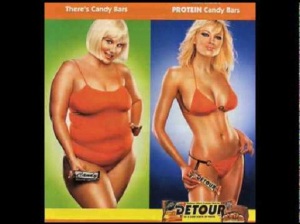
The female body is now taken very lightly. Man feels that a woman’s body is just a piece of meat that can be used and abused till one is satisfied. I doubt women feel the same about men, cause if they did, i’m sure we’d have more women artist painting pictures of nude men rather than male artist who are completely drawn to the female body and feel that every piece of art work is successful only if a naked female body was used. Artist John Currin an American painter based in New York City paints satirical figurative paintings that deal with provocative sexual and social themes, he feels free to paint the nude female body and exagurrates it to a great extent.

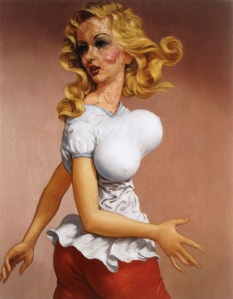
I’m absolutely in love with the way Currin paints his work but come to think of it, the artist by all means goes ahead and enlargens the breasts and buttocks of the beautiful ladies that he has painted. Are breasts and buttocks the only attractive aspect to the female body? are they the only part of the body that men lay their eyes on? Whatever happened to eyes and lips.
While going through YouTube videos i came across a documentary of Heera Mandi and how the female body has lost all respect. For example in the following video https://www.youtube.com/watch?v=yBNqW6g2mwg A lady who owns a small room in a “rundi khana” talks of how no one wants to marry her daughter hence her daughters are left with no other option than to dance for men and use their bodies to earn money. Is that what the female body is meant for? Why dont we see places where men dance for women or where men dance to earn a living? Is the female body disregarded to such a great extent that even rice and hard drinks have to be advertised through the female body (with reference to the following video https://www.youtube.com/watch?v=em-Nur0-EjA) or would a man never buy a bottle of AXE spray if hundreds of women wearing bikinis would not run his way like in the following AXE advertisement https://www.youtube.com/watch?v=I9tWZB7OUSU
I personally feel that Art and Media heavily rely on the use of the female body in today’s world. Many artists prefer painting the female body over the male and many movies, videos and brands advertise largely through the female body, take for instance the upcoming Pakistani film titled – “Na Maloom Afraad” in which a Pakistani actress Mehwish Hayat dances to a hit song in revealing clothes as men with awe and dumbstruck faces look on her. 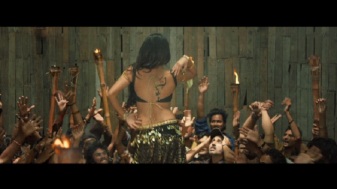

Trust me, i’ve never seen a single video in which a man is dressed up in such revealing clothes with women happily staring at him.
I feel that the female body, be it covered or revealed has a huge impact on the mind (and body) of the male population in our world today. it has the power to earn an income and also affect the lives of many men though it’s a pity that people feel free to use and abuse it to their hearts’ content.
Notes
[23] http://www.emax.tv
Bibliography
__________________________________________________________________________________________________
DISNEY PRINCESSES AND FEMINISM
By Farehah Aftab Khalil Shaikh
Feminist critique, according to Judith Butler in her book ‘Gender Trouble: Feminism and the Subversion of Identity’, should understand how the subject of feminism is produced and restrained by the power structures.[24] I think power structure would also include media, and here my focus is Disney princesses which influenced our childhood.
Male dominance is a global phenomenon, for example Irigaray views that there is only one sex, the masculine. Similarly, Islamic perspective also supports that females were made out of the rib of males, hence they are docile.[25] Meaning women can never be independent from male and will remain under patriarchal society where women are subservient to males.
Disney movies about princesses were released during the Waves of Feminism, and what has been noted throughout is the ignorance of such movement by Walt Disney Corporation. In 1937, however, the first ever Disney princess movie Snow White was released which was not liked by the feminists of that time. This is known as the 1st Wave of Feminism, during this time most of the women were housewives but wanted their daughters to work.[26] Instead of being a role model to young girls, the movie reflected how good princess was at housekeeping. Walt Disney, nevertheless, sold the aspiration of becoming pretty and slender princesses with great singing voice to young girls who would soon get their princes. Since, there was a backlash from the feminists’ side Walt Disney Company, in 1959 came up with Sleeping Beauty. However, the same message was repeated when sleeping beauty is just sleeping and is woken up by a true love’s kiss. [27]
Sleeping Beauty was released during the Second Wave of Feminism, and it depicted the same scenario as that of Snow White’s. Second wave of feminism was that of women fighting for their rights to equality, their rights in family, reproductive rights, rights in workplace and sexuality. Not keeping the feminist movement in mind, Walt Disney did not make changes to the theme of the movie, that is, to be waiting for their true love to rescue them (male protection) and marry happily ever after. In both the movies, I feel Walt Disney deliberately wanted to suppress the women’s role, since their main audience was young girls, and not show the true picture of other qualities such that of determination, confidence, assertiveness and braveness. These qualities are considered more masculine, suiting only the men in the society.
The little mermaid was released in 1989 and in 1991 The Beauty and the Beast came out, which was in the third wave of feminism. This wave is more global and takes women from every country, race, and color in to account. However, again the two movies were a little late to catch up with the movements’ views. Both the movies sold the idea of a pretty princesses finding their true love but also struggling for it a little (ambition).
To sum up, throughout the waves of feminism and women fighting for their rights, Walt Disney glorified the concept of princesses, good housekeeping and a male dominant society. Selling such dreams to young girls might unconsciously make them subservient to male counterparts and will look upon men as their prince (guide, decision maker, powerful).
[24] Judith Butler, ‘Gender Trouble: Feminism and the Subversion of Identity’, Art and Society IVS Blog, (Posted: 25th August 2014).
https://artandsocietyivs.files.wordpress.com/2014/08/judith-butler-gender-trouble-small.pdf
[Last Accessed: 8th September 2014].
[25] Name Unknown, ‘Men are Superior to Women’ Renaissance(A monthly Islamic journal).
http://www.renaissance.com.pk/Feb62y5.htm [Last Accessed: 8th September 2014].
[26]Nicole Sawyer, ‘Feminist Outlooks at Disney Princess‘s’, James Madison University Website.
http://www.jmu.edu/commstudies/conflictanalysis/wm_library/SawyerFinal.pdf [Last Accessed: 8th September 2014].
[27] Sawyer, ‘Feminist Outlooks at Disney Princess‘s’, http://www.jmu.edu/commstudies/conflictanalysis/wm_library/SawyerFinal.pdf
[Last Accessed: 8th September 2014].
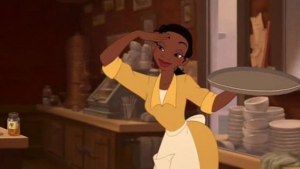 The Princess and the frog,2009.
The Princess and the frog,2009.
 little Mermaid (trailer),1989.
little Mermaid (trailer),1989.
__________________________________________________________________________________________________
WHY THERE HAVE BEEN NO GREAT WOMEN ARTISTS?
BY ZOYA NADEEM KAZMI
One of the ideas that intrigued me was Linda Nochlins question about why there have been no great women artists? Linda Nochlin is considered one of the major feminists in art history. Her essay asking why there have been no great women artists is a very well known article and has had a huge impact on the field.
I found her argument very truthful and straightforward because instead of driving her argument with ones emotions, she provides historical facts and analysis to explain her point.
She goes to the source itself, which is society. She vaguely blames the “social forces” for ignoring women and their opportunities. The problem was not in women or their intellectual ability to think as a “genius” but the society itself acted as an external force behind the lack of great women artists.
For example, Nochlin focuses on how women were barred from art institutions and were not allowed to draw nude models from the renaissance to the late nineteenth century which stopped women from achieving the success equal to men, who on the other hand, were appreciated and were given more opportunities in the field of art. Therefore, lack of opportunities for women back in those times prevented them from being “Great artists”. Another example of male superiority and lack of opportunities for women was explained by Nochlin that if a man wanted to do something considered feminine for example cooking, he could do it without any judgment passed by the society, however, if a women wanted to take up a masculine role she would be barred from doing it.
Nochlin’s question “why there have been no great women artists?” is a very valid one because there has been no female artists equivalent to Michaelangelo, Van Gogh or remembrandt and no study can change this fact. She has put forward her argument with such boldness that it provokes one to reexamine and reevaluate the role a society can play in shaping ones opportunities, future and leads to question how can we expect great women artists when they are not given the chance to compete with men to reach equal standing?
Although Linda Nochlin makes her argument straightforward and logical, I feel she has used a few generalities in her writing. She has looked through renaissance till the 19th century rather than focusing more on a certain culture within a certain time period.
__________________________________________________________________________________________________
Gender: A Performance
By Ayesha Naveed
Gender and sex are two words that are used in an undifferentiated manner. However excerpts from Judith Butler’s book Gender Trouble suggests that the two words have certain characteristics specific to their meaning. Sex having a biological connotation, refers to the categories (male and female) into which humans and most other living things are divided on the basis of their reproductive functions (28). Gender is the state of being male or female (typically used with reference to social and cultural differences rather than biological ones) (29). Therefore I think it is safe to say that sex is a biological state and gender is the expectation from a person being in that specific biological condition by a heterosexual homogenous society that has recently started to incorporate the transgender state of being.
The performance by Coco Fusco and Guillermo Gomez-Pena called ‘The Year of the White Bear’ echoes the performativity of gender. Fusco came out of the experience unaffected because being a woman she has always felt like an object on display whereas Guillermo was deeply affected because his conditioning had been different. He was exposed to a situation that mostly comes with being a woman and hence his reaction was very different from that of Fusco. Anne-Fausto Sterling also talks about the performativity of gender in her book ‘How to Build a Man’ (30). Her argument is based on the fact that men are made, not born. Since childhood, children of different sexes are told to act in a particular way that is considered to be the norm of that particular society, civilization, age. Being a man or woman has certain implications that are subjected to social and cultural norms of a particular time and place. These connotations are not necessarily biological but depend on factors other than the physical features of a person.
Artists like Daine Torr who has been teaching women to dress and walk like men in the city streets (31) and Heather Cassil who defies gender performativity norms in his performance pieces (32) all highlight the fact that men and women act in a definite mannerism due to certain qualities that come with the biological title of being a ‘man’ or a ‘women’. Their work suggests that since it is possible to change roles, being male and female is a social occurrence and not a biological one. In the speech’ Ain’t I a Woman’ by Sorjouner Truth (33), she questions that despite being a women, everything she does is what men are expected to do so does that make her not a woman?
Wolfgang Klaus is a male artist who highly supports feminism and the notion that men and women are equal (34). He is breaking away from a norm where only women support feminism. But that does not make him less of a ‘man’. The idea that gender is performative and is defined by a set of conditions that come from being in a particular social and cultural age, I am able to understand the claim of feminism more clearly. Women should not be undermined for performing a preconceived role that has been formed by the power of a phallocentric society. The whole concept of gender and sex becomes a questionable subject for me. It intrigued me to look at this idea from a very different perspective that is not generally incorporated in the universal understanding of this subject
References:
(28) Definition of Sex. Dictionary. http://dictionary.reference.com/browse/sex
(29) Definition of Gender. Dictionary. http://dictionary.reference.com/browse/gender?s=t
(30) Anne-Fausto Sterling. ‘How to Build a Man’. http://masculinesupremacy.blogspot.com/2011/03/blog-post-1-how-to-build-man-by-anne.html
(31) Daine Torr. ‘Sex Drag and Male Roles: Investigating Gender as Performance’. http://dianetorr.com/book-sex-drag-and-male-roles-investigating-gender-as-performance/
(32) ‘Heather Cassil: the Transgender Bodybuilder Who Attacks Heaps of Clay’. The Guardian. http://www.theguardian.com/artanddesign/2013/oct/03/heather-cassils-transgender-bodybuilder-artist
(33) Sorjouner Truth’s Speech ‘Ain’t I a Woman’. http://www.nolo.com/legal-encyclopedia/content/truth-woman-speech.html
(34) ‘Feminist Male Artist Shakes Up Gender Norms’. DW. http://www.dw.de/feminist-male-artist-shakes-up-gender-norms/a-16506066
__________________________________________________________________________________________________
Hysterization Of The Female Body And Male Gaze
By Hafsa Sakaria
In Linda Nochlin’s ‘Why Have There Been No Great Artists?’ It had a focus on the hysterization of the female body and male gaze which seized my attention, therefore I really wanted to write about this. It really made me question my gaze and my understanding of how people view me as well as how I look at myself.
Women have been sexually objectified since the Renaissance period – 14th centuries for the pleasure of male subjects. Most male artists are the ones who painted nude females in order to please other men for e.g. Eduard Manet’s Olympia 1863 and Venus of Urbino by Titian shows how nude women were degraded as a mere object.
Male gaze comes from men being the watchers and women being ogled, when the gaze is set to the heterosexual man’s perspective ,taking away the agency from the female and accord it to the male.In that case women are sexually objectified from the spectator that are not always the males but they are put in the eyes of the males. Similarly, I think female gaze is also the same as male gaze. Women position themselves into male shoes, and judge themselves from a male’s perspective. Feminist are against male gaze , they find themselves equal to men and have a role and representation in society. For example Cindy Sherman’s untitled stills- she is highlighting dominance of women in society and how unintentionally we are staring at her- she is accentuating the male gaze.
I think most women want to be loved and like gaining attention by heterosexual men, consequently, the power is in the hands of the male. Thus they look at themselves with a perspective of a male, which literally becomes that of a male gaze. But at the same time how would a man feel being judged and gazed all the time. Cuco Fusco’s work really answered my question. In The Year of The White Bear, 1992 By Fusco And Gómez-Peña, they both were dressed as Amerindians and locked in a cage for 3 days, they were being looked, stared scrutinized and goggled closely, and after the act when Gómez-Peña was asked how did he find the perpetual gaze he replied ‘I had a more emotionally involved experience, I don’t know how to turn off. As a result I came out of the cage three days later completely, spiritually devastated. And Coco was complete and whole and ready to do the next piece.’ [35]just because coco is a female she was used to being scrutinized like all the females are but for a male being perpetually gazed by females and males was more like a torture. i have noticed that mostly male gaze is being used by advertising agencies where females sell female products as well as male products, for example the bonanza billboards in Karachi or the axe body spray ads. I think it should be stopped, female shouldn’t be objectified.
Notes:
[35] http://bombmagazine.org/article/1599/ by anna johnson
_____________________________________________________________________________________________________
UNTITLED (YOUR GAZE HITS THE SIDE OF MY FACE)
By Andleeba Akhtar
Artist: Barbara Kruger
Date: 1981-83
Medium: Photography
Genre: Portrait
This is a photograph taken of a woman’s statue in profile that is chiseled in stone. The light is casting a shadow on her face enhancing her contours and giving the image a three dimensional effect. The text alternates in black and white with letters popping forward from the image. It shows the classical female beauty which is considered a benchmark in our society. It depicts the picture of a perfect woman who is aware of all eyes on her but she has turned a cold cheek.
According to Oxford dictionary, gaze means to “look steadily and intently, especially in admiration, surprise, thought.
The title ”your gaze hits the side of my face” screams out feminism and points out the thousand brutal objectifying eyes staring down her face but her dark stony gaze is determined as she doesn’t care. Barbara Kruger has selected her words very carefully for this immense impact. In this artwork, the text and image blend together to raise questions on the different perceptions of gender and female identity.
The second wave of feminism peaked in the 1970’s and addressed all problems women experienced like legal rights, sexuality, work harassment, etc. Various feminist artists worked with topics such as gender, form and identity. Barbara Kruger is among those artists who responded to the Feminist Movement in art. This masterpiece portrays the judgmental gaze of the opposite gender. It is the way that men look at women, instantly materializing her.
When a man looks at a woman he sees the possible relation between her and himself. The male gaze is an invincible force that turns women into an object who cannot have their own feelings or opinions and are supposed to fulfil his demands. But the text and image is conveying a strong message that women are stronger and they do not need to give in to male temptations and desires.
